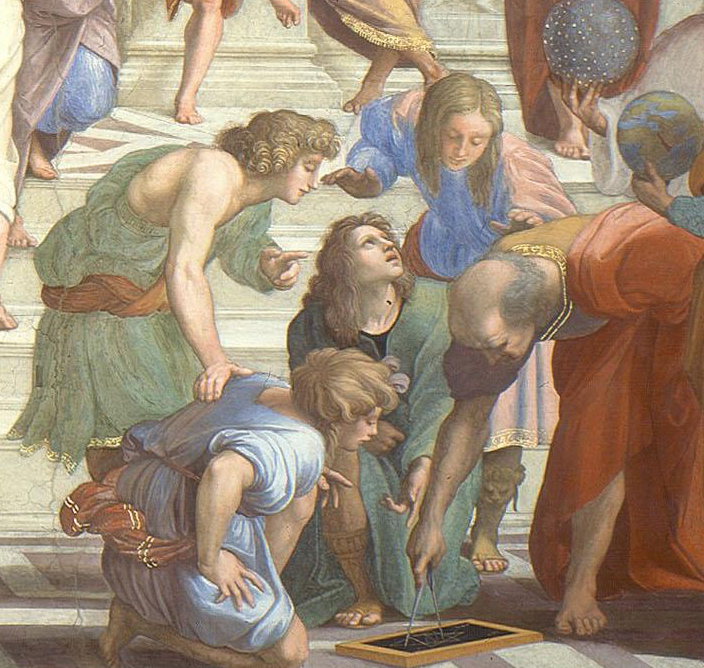Thomas Cole, 1801-1848
Thomas Cole, The Course of Empire (1833-1836)
"With The Course of Empire, Thomas Cole achieved what he described as a "higher style of landscape," one suffused with historical associations, moralistic narrative, and what the artist felt were universal truths about mankind and his abiding relationship with the natural world." -- from the Explore Thomas Cole web site
As with Raphael's Stanza della Segnatura frescoes, Cole's Course of Empire does not tell the story of a specific culture or nation. Though Cole presents his ideas in the architectural language of Western culture, The Course of Empire portrays a sequential narrative applicable to all enterprises that become empires.
At the time when Cole was painting The Course of Empire, there were three main competing doctrines about the development of human societies: the degenerative, the cyclical, and the progressive.
According to both classical and Christian authorities, the human race lived in a golden era or a perfect world of Eden. In the course of time, humans fell from this blessed state, declining through the ages of silver, bronze, then iron, or through the sins of Adam and Eve in Paradise.
Other beliefs argued for the cyclical nature of human societies over time: a rise, a fall, another rise and fall — time without end. The goal of some of the religions that espoused this view was to devise an escape from the endless rounds of repetition and merge into the eternal, unchanging unity of God.
The nineteenth century envisioned a third pattern in the development of human culture over time: Progress, seen as an upward trend in human society that brought continuous improvement in the intellectual and physical conditions of humanity.
Cole’s vision is a composite of these views. Humans progress from savagery to a splendid apex of civilization.
Then the wealth of the civilization attracts warrior societies bent on rapine and destruction of the over-ripe, degenerated peoples.
Finally, the great monuments of the civilization crumble back into the landscape, where the next epoch of life and death will arise.
Note the continuity of the distant mountain peak in all five paintings:
Nature endures, while human societies rise and fall.
The Savage State
(click on the image for a lightbox view)
The Arcadian or Pastoral State
(click on the image for a lightbox view)
The Consummation of Empire
(click on the image for a lightbox view)
Destruction
(click on the image for a lightbox view)
Desolation
(click on the image for a lightbox view)
To view the images and discussion of Cole's The Voyage of Life, click the image below:












